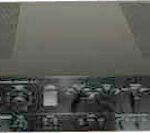Encountering a Check Engine Light can be alarming, especially when it’s accompanied by a trouble code like P0430. This code, often described as “Catalyst System Efficiency Below Threshold (Bank 2),” indicates a potential issue with your vehicle’s catalytic converter. For many car owners, this might sound like an expensive repair involving a full catalytic converter replacement. However, before you rush to that conclusion and hefty bill, there are several less costly steps you can take to troubleshoot and potentially fix the P0430 code yourself.
The P0430 code essentially means that your car’s computer, the Powertrain Control Module (PCM), has detected that the catalytic converter on Bank 2 is not working as efficiently as it should. Catalytic converters are crucial components in your car’s exhaust system, responsible for reducing harmful emissions. They work by using chemical reactions to convert pollutants into less harmful gases. Bank 2 refers to the side of the engine that does not contain cylinder number 1.
Before diving into potential fixes, it’s important to understand that a P0430 code doesn’t always mean your catalytic converter is failing. Sometimes, the issue can be triggered by simpler problems that affect the converter’s efficiency. Here are some common culprits and DIY solutions you can explore:
1. Inspect and Replace Your Fuel Cap
Believe it or not, a loose or faulty fuel cap can sometimes trigger a P0430 code. The fuel cap is essential for maintaining pressure within the fuel system. If it’s not sealing properly, it can lead to evaporative emissions leaks, which can indirectly affect the readings from your oxygen sensors and potentially trigger the P0430 code.
- Action: Check your fuel cap to ensure it’s tightly closed and in good condition. Look for any cracks or damage. If it seems worn or doesn’t click properly when tightened, replacing it with a new fuel cap, ideally an OEM part, is a cheap and easy first step.
2. Check and Replace Your Air Filter
A dirty or clogged air filter can restrict airflow to the engine. This can lead to a richer fuel mixture (more fuel, less air), which can put extra strain on the catalytic converter and reduce its efficiency.
- Action: Locate your car’s air filter housing, usually a rectangular box under the hood. Open it up and inspect the air filter. If it’s visibly dirty, clogged with debris, or hasn’t been replaced in a while (check your owner’s manual for recommended intervals), replace it with a new one. This is a simple maintenance task that can improve engine performance and potentially resolve the P0430 code.
3. Use a Fuel System Cleaner and Premium Gasoline
Carbon deposits in the fuel system, injectors, and even on the oxygen sensors can affect engine performance and catalytic converter efficiency. Using a quality fuel system cleaner can help remove these deposits. Additionally, using premium gasoline with higher octane levels can sometimes improve combustion and reduce strain on the catalytic converter, especially in older vehicles or those prone to carbon buildup.
- Action: Purchase a reputable fuel system cleaner additive (like Techron, as mentioned in the original post). Follow the instructions on the bottle, typically involving adding it to your fuel tank when you fill up. Consider using premium gasoline for a few tankfuls to see if it makes a difference.
4. Understand the Role of Oxygen Sensors (O2 Sensors)
While the P0430 code points to the catalytic converter, it’s important to know that oxygen sensors play a crucial role in monitoring its performance. There are typically two oxygen sensors associated with each catalytic converter:
- Upstream O2 sensor: Located before the catalytic converter. It measures the oxygen content in the exhaust gas coming from the engine.
- Downstream O2 sensor: Located after the catalytic converter. It measures the oxygen content after the exhaust gas has passed through the converter.
The PCM compares the signals from these sensors to determine the catalytic converter’s efficiency. If the downstream sensor readings are too similar to the upstream readings, it indicates that the converter isn’t effectively reducing pollutants, and the P0430 code can be triggered. While less likely to be the primary cause of a P0430 code initially, faulty or degraded oxygen sensors can contribute to the problem over time or lead to misdiagnosis.
5. Drive Cycle and Code Reset
After performing any of the above fixes, it’s essential to clear the P0430 code and then perform a “drive cycle.” A drive cycle is a specific driving pattern that allows the car’s computer to re-evaluate the systems and confirm whether the issue is resolved.
- Action: You can clear the code using an OBD-II scanner. Many auto parts stores will also do this for free. After clearing the code, drive your vehicle through a drive cycle. The specifics of a drive cycle can vary by manufacturer, but generally involve a combination of city and highway driving at varying speeds. Monitor if the Check Engine Light and P0430 code reappear after driving for a while.
When to Consider Professional Help
If you’ve tried these DIY steps and the P0430 code persists, it’s time to seek professional diagnosis from a qualified mechanic. While the initial problem might have been a minor issue, a persistent P0430 code could indeed indicate a failing catalytic converter or other more complex problems in the exhaust system, such as exhaust leaks or issues with the engine management system.
Replacing a catalytic converter is a significant repair. By starting with these simpler, less expensive fixes, you might just save yourself a considerable amount of money and resolve the P0430 code effectively. Remember to always prioritize safety and consult your vehicle’s repair manual or a professional if you’re unsure about any of these procedures.

